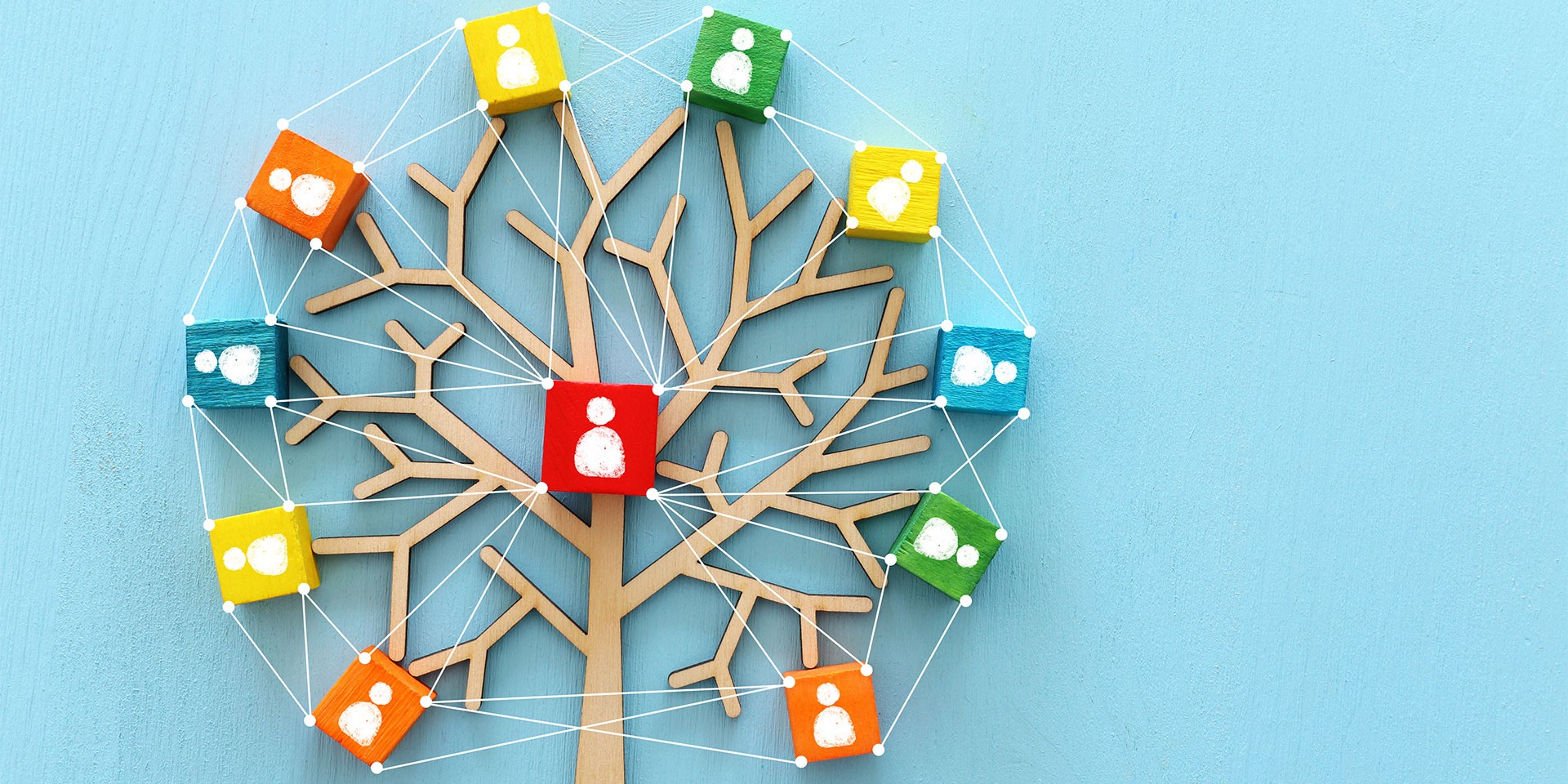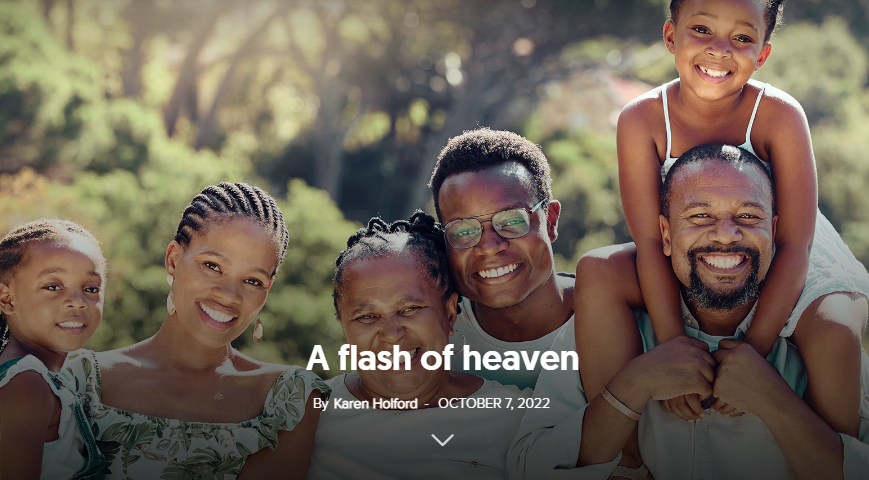From a distance, it looked like a simple picture of a tree: nothing very artistic—more of a sketch in subtle shades of brown and green. But as I looked closer I noticed something unusual. The tree had been constructed out of words and phrases. Someone had collected snippets of information about their family and their ancestors, and written it down to form the trunk and the branches, using various shades of ink. Soon people’s names, birth dates, marriages, occupations, significant events and places emerged from the patterns in the picture.
By far the most interesting family trees are those that have stories tucked away in them. I want to know something about my ancestors. I want them to take shape and come alive and become more than a name in copperplate script. I want to know what made them laugh, what they enjoyed doing, what inspired them, what made them cry and what they wanted to pass onto the generations that followed them.
I discovered that my (great- great- great- great-) great-grandfather was deported to Australia for committing an armed robbery in Oxfordshire in the late 1700s. He left a wife and six children. He died seven months after landing on Australian soil. His family probably never knew what became of him, and I’ve wondered how that experience affected their lives.
Family trees can be created in different ways. Many are simple diagrams showing names, dates and relationships, tracing the family back over several generations. Some contain faded photographs. Some come with a box of “treasures”—the first lock of hair snipped from the tousled head of a toddler; a piece of lace from great-grandmother’s wedding veil; uncle Pete’s pocket watch; a school report; newspaper clippings and wedding certificates.
Growing your own tree
In my work as a family therapist one of the most insightful activities I do with my clients is to help them construct their family tree.
Together, we gather the information about everyone they know in their family and we lay it out on a large sheet of paper. Sometimes we start by writing people’s names on small sticky notes—one colour for the men and another colour for the women—and we write their birth dates or ages below their names.
Then we group them into families and start laying them out to make a family tree, or genogram (a diagram of their genealogy). Once we’ve finished making the tree, we explore it together. I’m often amazed at how people use this activity to discover new ways of thinking about themselves and their families and the powerful effect it can have on their lives.
The great thing is you don’t need an appointment with a family therapist to have this experience. You can create your own family tree or genogram and use it to learn more about your own important relationships.
How to create your own genogram
Take two different colours of small sticky notes or paper rectangles of about 2.3cm each. Use one colour for male family members and another colour for females. Write the name of every relation you know on a separate sticky note. Then group different families together.
Take a large sheet of paper and stick the youngest generation at the bottom of the page and work up the page a generation at a time. The great thing about sticky notes is that you can keep moving them around if you need to adjust the spacing. Draw lines between the people who have married or formed partnerships and write the date that they were married or began living together along this line. If they have children, arrange them below the couple line, starting with the eldest at the left side of the line. Link each child to their parents’ couple line with a vertical line.
If a couple divorces or splits up, draw two parallel lines through their couple line and write the date that they split. You’ll need space for everyone’s couple relationships and children. Some families may have split and made new families several times and you may have to be creative about how you show these different relationships.
The bigger your family, the more complicated this process can be. But the important thing is that your diagram makes sense to you. Keep it small to begin with.
As you create your genogram, it is important to take care of yourself. If looking at your family brings up painful memories or distresses you, leave it for a while or find someone helpful to talk to.
Once you have all the information about your family tree in one place, you can begin to explore it. You can do this on your own, but it is more interesting to do it with some of the other people in your family.
Creative ways of using your genogram
Use different coloured sticky notes and write a list of each person’s positive strengths and skills. If you can’t think of any, ask other family members to help you. Maybe they had wisdom, faith, character qualities or other gifts that they used to support their family. What strengths did they pass on to others? Which of these strengths do you recognise in your own family or in yourself?
If you were to choose a character to represent each person in your family from history, the Bible, fiction, movies or TV shows, which characters would you choose?
Which are the closest and most supportive relationships in your family? What do you notice about these relationships? Are there patterns of close relationships (such as mothers and eldest sons)? If you were to choose objects to symbolise some of these different close relationships, what would you choose? Who are you closest to and what symbols would you choose for your close relationships? Would you like to be closer to some of the other people in your family? What could you do to help strengthen these relationships?
Who are the people in your family who might be lonely and isolated? What could you do to reach out to them? What relationships might need healing? What could you do to help solve conflicts and be a peacemaker between some of the people in your family?
What are the positive and inspiring stories you’ve heard about the people in your family? Try to find one inspiring story for each family member and keep them with your family tree or genogram. What inspirational stories would you like the people in future generations to tell about you and your life?
If you’re married, what have you learned and what are you learning about marriage and being a couple, from the other couples in your family? If you’re a parent, what are you learning about parenting from other parents and families? If you’re single, what are you learning from other family members that help you in your life?
Ask yourself what each person in your family tree has taught you about love, or being a family, or faith, or the meaning of life.
As you look at your genogram, are there patterns in your family that you don’t want to repeat, such as addictive behaviours, violent behaviours, abusive behaviours, difficulties staying committed to relationships, or families without fathers? What are you already doing to prevent these unhelpful family patterns from being passed on to future generations and how else are you planning to protect your family from these painful patterns?
What values are important in your family, such as hard work, caring for others, living simply or hospitality? How have these values been passed down through your family, who has passed them down and how are you living out these values in your life today?
How do the people in your family like to be loved? If you were to do something especially loving for each one of them, would they prefer a thoughtful gift, some practical help around the home, an encouraging card or letter, a visit, a chat on the phone, an invitation to dinner, a hug or something completely different?
Find an object that represents each character on your family tree. Perhaps grandpa is like a special vintage car—so find a toy replica and place that on his name. Maybe you remember Auntie Rose’s apple pies and you could put an apple on her name. Ask different people in the family to find a different object for each person on the diagram and then look at the objects you’ve collected. How are they different, or similar? Why did we see different sides of the same person? What object would you choose to symbolise your relationship with that person, rather than the person?
If you remember some heart-warming stories about your relationship with someone in your family who is still alive or some special qualities that your living family members have, why not write them a letter and tell them how much you appreciate them? We have been shaped and sculpted, to a degree, by our close relationships, and we also have the ability to positively shape and influence the other members of our families. Taking some time to understand our genograms can help us to make healthy relationship choices in our own lives.
Our families become a rich resource as we discover the timeless treasures they have handed down to us, treasures of love, resilience and wisdom, which are far more valuable than their wealth, possessions and heirlooms.
Karen Holford is a family therapist with a background in occupational therapy and developmental psychology. A version of this article first appeared on the Signs of the Times Australia/New Zealand website and is republished here with permission.




















